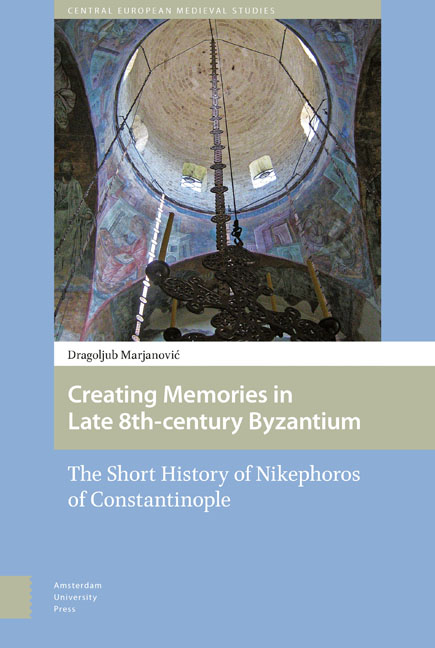Book contents
- Frontmatter
- Contents
- List of Tables
- Preface
- Introduction
- 1 Nikephoros the Layman
- 2 The Short History in the Byzantine Historiographical Tradition
- 3 Herakleios: Model of an Emperor
- 4 The Dark Century
- 5 Iconoclasts Restoring Order
- Conclusion: In Search of an Ideal Image of an Emperor
- Glossary
- Abbreviations
- Bibliography
- Index
- Frontmatter
- Contents
- List of Tables
- Preface
- Introduction
- 1 Nikephoros the Layman
- 2 The Short History in the Byzantine Historiographical Tradition
- 3 Herakleios: Model of an Emperor
- 4 The Dark Century
- 5 Iconoclasts Restoring Order
- Conclusion: In Search of an Ideal Image of an Emperor
- Glossary
- Abbreviations
- Bibliography
- Index
Summary
In essence, this book deals with Iconoclasm in the Byzantine empire. While the core of the dispute remained embedded in a Christological argument about depicting the Word and Son of God – Jesus Christ – in his human likeness, and the struggle to obtain justification for this practice of Orthodoxy, the place and role of the emperor remained an equally significant issue in the controversy. The apologists for icon worship in Byzantium's eighth and ninth centuries consistently insisted upon two crucial points. The first was the undisputed Orthodoxy of displaying God's oikonomia of the salvation of humankind through the depicting and revering of his icon, while the second was the freedom of the Church to define and propagate its doctrine without pressure and interference from the basileus. It was an ancient issue in the Church, reintroduced anew in eighth-century Byzantium with particular strength, bringing quite a few challenges to the Church of Constantinople. The Iconoclasm of the Byzantine emperors inspired various intellectual reactions from the Orthodox party, which proved to be up to the challenge and at the height of its capabilities to repel the attack, which was threatening to undermine the very foundations of Christian doctrine. The political and cultural aspects of Iconoclasm in Byzantium thus step into the forefront of research on this problem, as do equally the ecclesiastical and theological aspects. In fact, these processes were closely connected and intertwined. My aim in this study is to demonstrate that history writing at the end of the eighth century in Byzantium was both shaped and inspired by Iconoclasm. It was summoned to give an original contribution to solving the controversy and the various problems it had initiated. Iconoclasm influenced the Byzantine view of the past and forced an engagement with creative memory-making in order to produce a comprehensible and Orthodox view of the earlier traditions. The Short History of Nikephoros of Constantinople in this context presents the earliest example of such an enterprise, and a most original one as well. In this book – a revised Ph.D. dissertation – I shall reveal and demonstrate how Nikephoros wrote history, and how he responded to some of the key issues that brought the Orthodox Church into a dispute with the emperor, burdening their relationship.
This book would not have appeared as it does now without the great inspiration and scholarly support of Professor Vlada Stanković.
- Type
- Chapter
- Information
- Creating Memories in Late 8th-century ByzantiumThe Short History of Nikephoros of Constantinople, pp. 7 - 8Publisher: Amsterdam University PressPrint publication year: 2017



